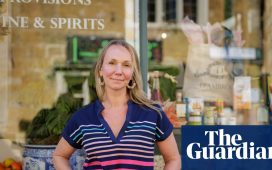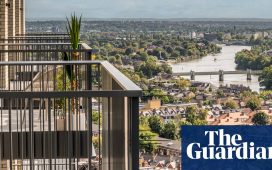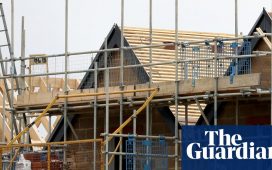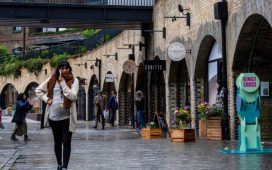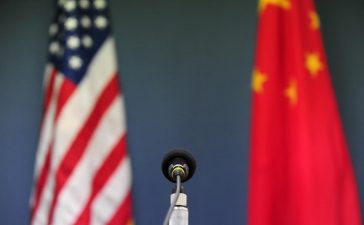King Charles has asked for profits from a £1bn-a-year crown estate windfarm deal to be used for the “wider public good” rather than as extra funding for the monarchy.
Under the taxpayer-funded sovereign grant, which is now £86.3m a year, the king receives 25% of the crown estate’s annual surplus, which includes an extra 10% for the refurbishment of Buckingham Palace.
Six new offshore wind energy lease agreements, announced by the crown estate on Thursday, have generated a major windfall for the estate, which would usually lead to a jump in the monarchy’s official funding.
The monarch’s right to collect royalties from wind and wave power was granted by Tony Blair’s Labour government in a 2004 act of parliament. The approach is in contrast to the job of setting royalties and assigning drilling rights for oil and gas, which rests with the government.
But the king, who highlighted the cost of living crisis in his Christmas message, has requested that the extra funds “be directed for wider public good”, instead of to the sovereign grant, at a time when many are facing financial hardship.
It is not clear as to the exact amount of taxpayer funding the king has passed up, but it is likely to be many millions.
The crown estate – an ancient portfolio of land and property – belongs to the reigning monarch “in right of the crown” but it is not their private property.
Profits for the crown estate jumped by £43.4m to £312.7m in the year to the end of March, with the value of its seabed portfolio swelling to £5bn.
The portfolio also includes chunks of central London – the monarch is one of the largest property owners in the West End, including St James’s and Regent Street – as well as farmland, offices and retail parks from Southampton to Newcastle.
The crown estate is also responsible for managing the Windsor estate, which spans nearly 16,000 acres (6,500 hectares) and includes parkland and ancient woodland, as well as the Ascot racecourse.
The total value of the crown estate’s properties was estimated at £15.6bn in the most recent annual accounts.
The monarch surrenders the revenue from the estate – more than £312m a year – to the Treasury each year for the benefit of the nation’s finances, in exchange for the sovereign grant.
The king’s keeper of the privy purse, Sir Michael Stevens, who manages the royal household’s finances, has contacted the prime minister, Rishi Sunak, and the chancellor, Jeremy Hunt – his fellow royal trustees – to ask for “an appropriate reduction” in the percentage of crown estate profits used for the sovereign grant.
A Buckingham Palace spokesperson said: “In view of the offshore energy windfall, the keeper of the privy purse has written to the prime minister and the chancellor to share the king’s wish that this windfall be directed for wider public good, rather than to the sovereign grant, through an appropriate reduction in the proportion of crown estate surplus that funds the sovereign grant.”
The sovereign grant is based on funds two years in arrears, so any boost in crown estate profits and new percentage arrangements would not affect the grant until 2024-2025.
The sovereign grant covers the running costs of the royal household and events such as official receptions, investitures and garden parties.
The percentage increased from 15% to 25% in 2017 to cover the cost of a 10-year programme of £369m’s worth of repairs at the palace.
The grant goes up if crown estate profits increase, but it does not fall when they decrease.
The crown estate confirmed on Thursday it had signed lease agreements for six offshore wind projects that have the potential to power more than 7m homes.
Three of the six projects are located off the north Wales, Cumbria and Lancashire coast, and three are located in the North Sea off the Yorkshire and Lincolnshire coast.
Together they will pay about £1bn to the crown estate every year.
The successful bidders, which were announced last year, included Germany’s RWE Renewables, which won two licences at Dogger Bank, off the Yorkshire coast, and two from a consortium that includes the oil company BP.
The sovereign and the wider royal family have three main sources of income – the crown estate, the Duchy of Lancaster and the Duchy of Cornwall, with combined assets of more than £17bn.


